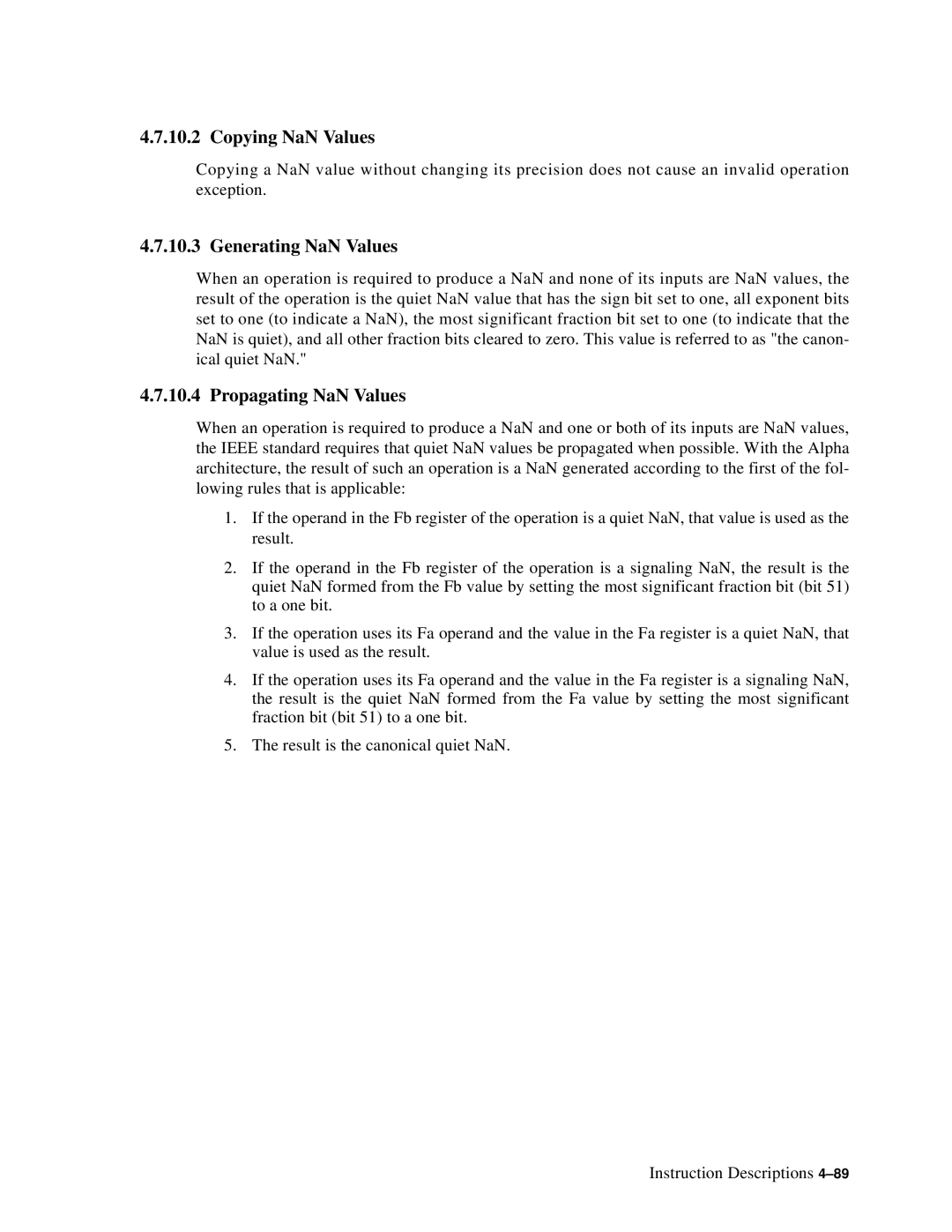4.7.10.2 Copying NaN Values
Copying a NaN value without changing its precision does not cause an invalid operation exception.
4.7.10.3 Generating NaN Values
When an operation is required to produce a NaN and none of its inputs are NaN values, the result of the operation is the quiet NaN value that has the sign bit set to one, all exponent bits set to one (to indicate a NaN), the most significant fraction bit set to one (to indicate that the NaN is quiet), and all other fraction bits cleared to zero. This value is referred to as "the canon- ical quiet NaN."
4.7.10.4 Propagating NaN Values
When an operation is required to produce a NaN and one or both of its inputs are NaN values, the IEEE standard requires that quiet NaN values be propagated when possible. With the Alpha architecture, the result of such an operation is a NaN generated according to the first of the fol- lowing rules that is applicable:
1.If the operand in the Fb register of the operation is a quiet NaN, that value is used as the result.
2.If the operand in the Fb register of the operation is a signaling NaN, the result is the quiet NaN formed from the Fb value by setting the most significant fraction bit (bit 51) to a one bit.
3.If the operation uses its Fa operand and the value in the Fa register is a quiet NaN, that value is used as the result.
4.If the operation uses its Fa operand and the value in the Fa register is a signaling NaN, the result is the quiet NaN formed from the Fa value by setting the most significant fraction bit (bit 51) to a one bit.
5.The result is the canonical quiet NaN.
Instruction Descriptions
